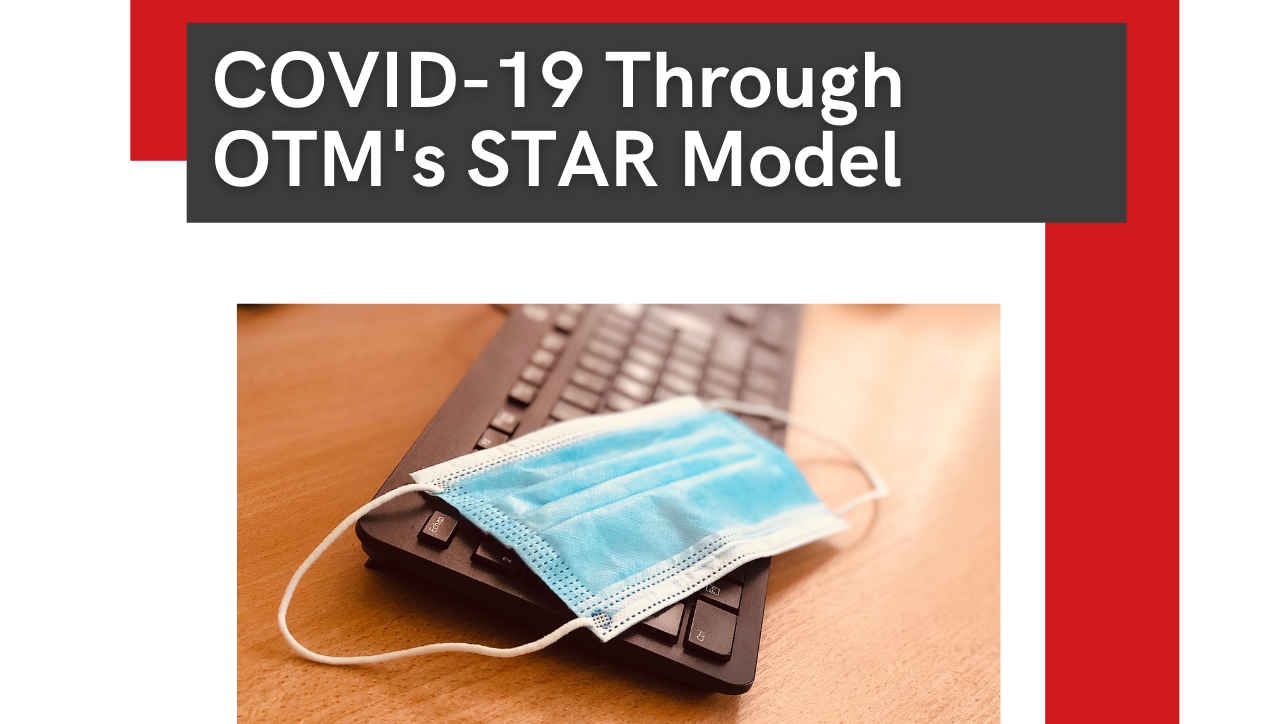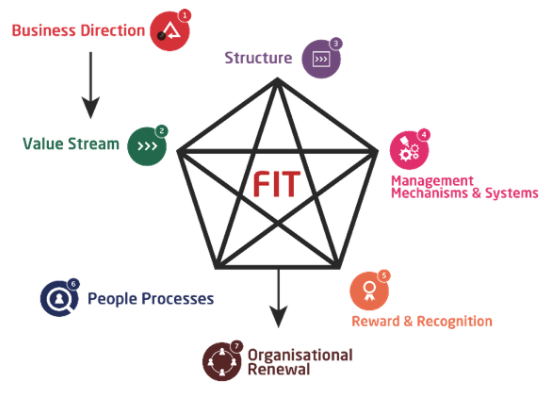7 minute read
Takeaway: If you have to make strategic changes to the operating model quickly, you have to ensure that the whole operating model (The Star) remains fit for purpose as changes are made.
The Current Landscape of Operating Models
Organizations are in two states of being at the moment:
- Focusing all their efforts toward keeping key services running. Delivering critical health/social care, maintaining field to fork supply chains or delivering other key services fall in this category.
- Other companies are considering what their options are when the world returns to its new normal.
This blog focuses on organizations emphasizing efforts to keep key services running. A follow-up blog will focus on the second category of companies.
The Operating Model Tested
Organizations focusing their efforts on running key services are quickly learning the inner workings of their operating model. Simultaneously, they’re learning what it means to truly be agile. Without a doubt, we all realize that key-service organizations in our countries are doing all they can to respond to the current crisis. The pace of change happening to operating models and ways of working would be considered impossible under normal circumstances. This has allowed me to take a step back and put on my organization designer’s hat. Using the OTM Applied Star model as a lens provides interesting insights.
A Supermarket’s Response in the UK
Consider the UK supermarket that changed its operating model in response to COVID-19. Changes involve:
- Handling a significant increase in demand
- Providing a safe environment for its staff and customers
- Maintaining business continuity with high levels of enforced absence.
These are all changes to Business Direction, which are played out at every point of the Star model.
The core customer value-creating work in the Value Stream is the same, but the demand changed. Because supermarkets have a deep understanding of their Value Stream, they reduced the number of SKUs (Stock Keeping Units) to remove complexity for themselves and their suppliers.
Emphasis on Staff
Although staff and customer safety is always a strategic imperative, COVID-19 requires new work in the Value Stream which has led to new roles in the Structure. This includes ‘Customer hosts’ who help customers remain 2m apart while shopping. They also ensure that a safe, maximum number of customers in a store are not exceeded.
Increased demand, new work and higher than usual absence levels will always put pressure on the existing workforce. Luckily they already built robust data-driven ERP (Enterprise Resource Planning) processes and systems as a Management Mechanism. By gluing together the core value-creating work, the organization was able to assess the changes they needed to resourcing levels within the Structure. The need for an additional 20,000 employees was identified and the existing People Processes filled these positions within 10 days. As a result, necessary changes to Reward and Recognition processes were introduced.
Here are actual notices the market made public for consumers and employees:
- We have almost 3,000 colleagues over the age of 70 and we are fully supporting them, as well as our vulnerable and pregnant colleagues, with 12 weeks’ fully paid absence.
- Colleagues who are in isolation are receiving full pay from their first day of absence so that nobody finds themselves in a situation where they have to work when unwell.
- To help support our team, we are recruiting an additional 20,000 temporary colleagues. We’ve already appointed 12,500 new colleagues, but we will need more. We are also bringing in 8,000 new colleagues in driving roles, and we are training them as fast as we can
- We will be giving a 10% bonus on the hourly rate for hours worked to colleagues across its stores, distribution centers and customer engagement centers. For front-line salaried managers, this will be a 10% bonus on actual hours worked backdated to Monday 9 March.
The Last Stages of the Star Model
Finally, as part of this quick run around the Star, the visible changes they made to the Management Mechanisms are noteworthy. Early on they recognized how integral their supplier was to the successful delivery of the end-to-end Value Stream. They understood the cash flow pressures that their suppliers were under and responded by significantly reducing their usual payment terms. In ten days, this supermarket moved from having empty shelves, through rationing the number of products a customer could buy, to a position where shelves are stocked again. More importantly, they have changed customer buying behavior, preventing further extensive queuing and stockpiling.
From an operating model design perspective, we can make reasonably accurate assumptions about the standardized and integrated processes. The standardized processes will be the same everywhere in the organization. Integrated processes will run across the org structure throughout the geographically dispersed organization. Knowing and understanding this allowed our supermarket to quickly introduce changes. They also implemented new processes using existing roles. In comparison, other organizations are finding it harder to make changes to their supply chains or introduce new processes. We might hypothesize that these organizations have a shallow and less mature understanding of their operating model.
Key Takeaways
There are many lessons to be learned from our supermarket example. The key one is that if you have to make strategic changes to the operating model quickly, you have to ensure that the whole operating model (The Star) remains fit for purpose as changes are made. Organizations that understand all parts of their operating model can respond with agility to unplanned changes that impact their strategic intent. The time they spent understanding and designing their operating model means that they can then change and leverage it quickly. They pay now, rather than pay later. Time spent during the initial design means they don’t have to pay now.
There are many examples of leaders and companies understanding or failing to understand the capability of a strong operating model. An understanding of the purpose of an operating model leads you to ask an F1 team or Dyson to rapidly develop a ventilator. Failing to understand the importance of an operating model leads you to ask Ford or GM to do the same thing.
When a new normal is established and we review the organizational lessons learned, we will find that success correlates very closely with leaders’ depth of understanding their operating model.
In our next blog, we will look at organizations considering their options as we return to the new normal and how they’re valuably spending the time they have now.
Never miss out on OTM blog updates.
Subscribe to be notified whenever we post.
Peter Turgoose was a Senior Consultant at ON THE MARK.
OTM is the leading global boutique organization design consultancy with offices in the USA and UK. With over 450 successful redesigns and operating model modernizations completed, OTM is owner of the industry’s most integrated, comprehensive and holistic organization design solution. OTM enables its clients to realize their future ambitions.





